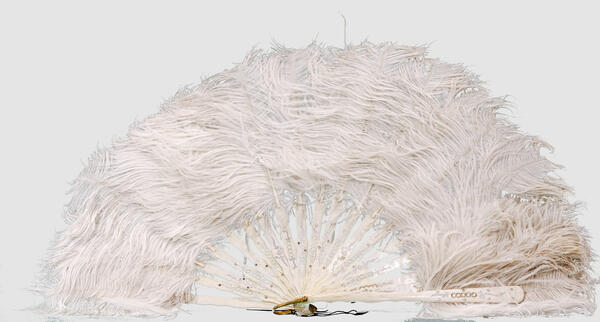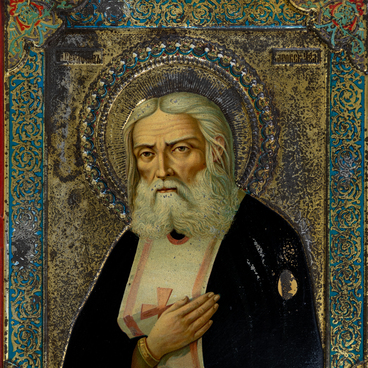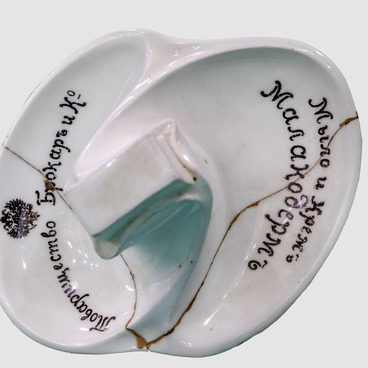The folding Pliant fan was consigned to the Mytishchi History and Art Museum by Natalia Pavlova, a resident of the city of Mytishchi. She inherited it from her grandmother, Olga Pavlova. In the ancient nations of India and China, fans like these were status symbols of royalty. The exhibit with noble roots now on display was manufactured in Russia in the 19th century. It is made from ivory with metal inserts imitating gold and silver. The ivory used in this item is much sturdier than regular materials, like wood or nacre. The fan is decorated with ostrich feathers, with other elements crafted from paper and metal. Engraving and carving were used to create this fan.
The folding fan comprises several segments: eighteen ivory plates. The end plates are thicker than the rest—those are called ‘guards.’ The floral and geometric pattern runs across the ivory plates, and at one end the plates are conjoined with a special metal rivet—a pin with a ring. Guards and plates are the skeletal base of the item, the solid part of the fan.
The other part of the exhibit—the one with the ostrich feathers—is called the screen of the fan. There are several different manufacturing options for fan screens. Solid screens, seen in some fans, are comprised of the wide plates themselves. Soft screens are made from paper or fabric. Fans with folding screens made from feathers have a special designation: ‘Pliant.’ Originally, the word comes from French.
Even though the fans have lost their significance in the 19th century, this elegant accessory was still favored by women everywhere. In the 19th century, ostrich feathers became widely used for screens instead of more traditional materials. This led to a sharp decline in ostrich population. Some caricatures of the second half of the 19th century depict fashion-forward ladies chasing the scared ostrich birds. Plots captured on the screens changed, too. Pastoral scenes and images of gallantry were replaced by scenes from history. Birds, animals, and antique motifs were often seen on the fan screens—especially when the Empire style was all the rage—as well as a popular stylized floral and geometrical pattern. The fan, of course, remained a tool of ladies' coquetry.
The folding fan comprises several segments: eighteen ivory plates. The end plates are thicker than the rest—those are called ‘guards.’ The floral and geometric pattern runs across the ivory plates, and at one end the plates are conjoined with a special metal rivet—a pin with a ring. Guards and plates are the skeletal base of the item, the solid part of the fan.
The other part of the exhibit—the one with the ostrich feathers—is called the screen of the fan. There are several different manufacturing options for fan screens. Solid screens, seen in some fans, are comprised of the wide plates themselves. Soft screens are made from paper or fabric. Fans with folding screens made from feathers have a special designation: ‘Pliant.’ Originally, the word comes from French.
Even though the fans have lost their significance in the 19th century, this elegant accessory was still favored by women everywhere. In the 19th century, ostrich feathers became widely used for screens instead of more traditional materials. This led to a sharp decline in ostrich population. Some caricatures of the second half of the 19th century depict fashion-forward ladies chasing the scared ostrich birds. Plots captured on the screens changed, too. Pastoral scenes and images of gallantry were replaced by scenes from history. Birds, animals, and antique motifs were often seen on the fan screens—especially when the Empire style was all the rage—as well as a popular stylized floral and geometrical pattern. The fan, of course, remained a tool of ladies' coquetry.



